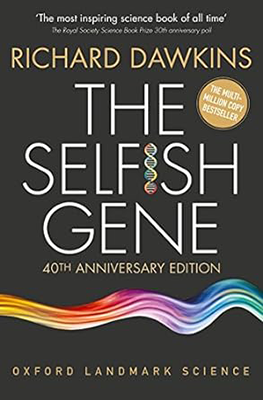The Selfish Gene
“The Selfish Gene” is a groundbreaking book by evolutionary biologist Richard Dawkins, first published in 1976. In this influential work, Dawkins introduces the concept of the gene as the fundamental unit of natural selection and explores its implications for understanding evolution.
The central thesis of “The Selfish Gene” is that genes, not organisms, are the primary agents of evolutionary change. Dawkins argues that genes strive to replicate themselves, and they do so by influencing the behavior of organisms in ways that maximize their own transmission to future generations. This concept is encapsulated in the idea of the “selfish gene,” which acts as a metaphor for the process of natural selection.
Dawkins explains how genes shape various aspects of animal behavior, including mating strategies, parental care, and social interactions. He introduces the concept of the “gene’s-eye view” of evolution, which emphasizes the perspective of genes as they compete for survival and reproduction.
One of the key insights of “The Selfish Gene” is the concept of “kin selection,” which explains how altruistic behaviors can evolve even if they appear to be detrimental to the individual organism. Dawkins argues that altruistic behaviors, such as helping relatives, can increase the likelihood of the altruistic gene being passed on to future generations because relatives share a portion of the altruistic gene’s genetic material.
Dawkins also explores the concept of “memes,” which are cultural units of information that can be transmitted from person to person, analogous to genes. He suggests that memes, like genes, can undergo a process of natural selection, shaping human culture and behavior.
Overall, “The Selfish Gene” is a thought-provoking exploration of the role of genes in evolution and the nature of selfishness and altruism. It has had a profound influence on the fields of biology, psychology, and philosophy, sparking debate and discussion about the nature of life and the mechanisms of evolution.

